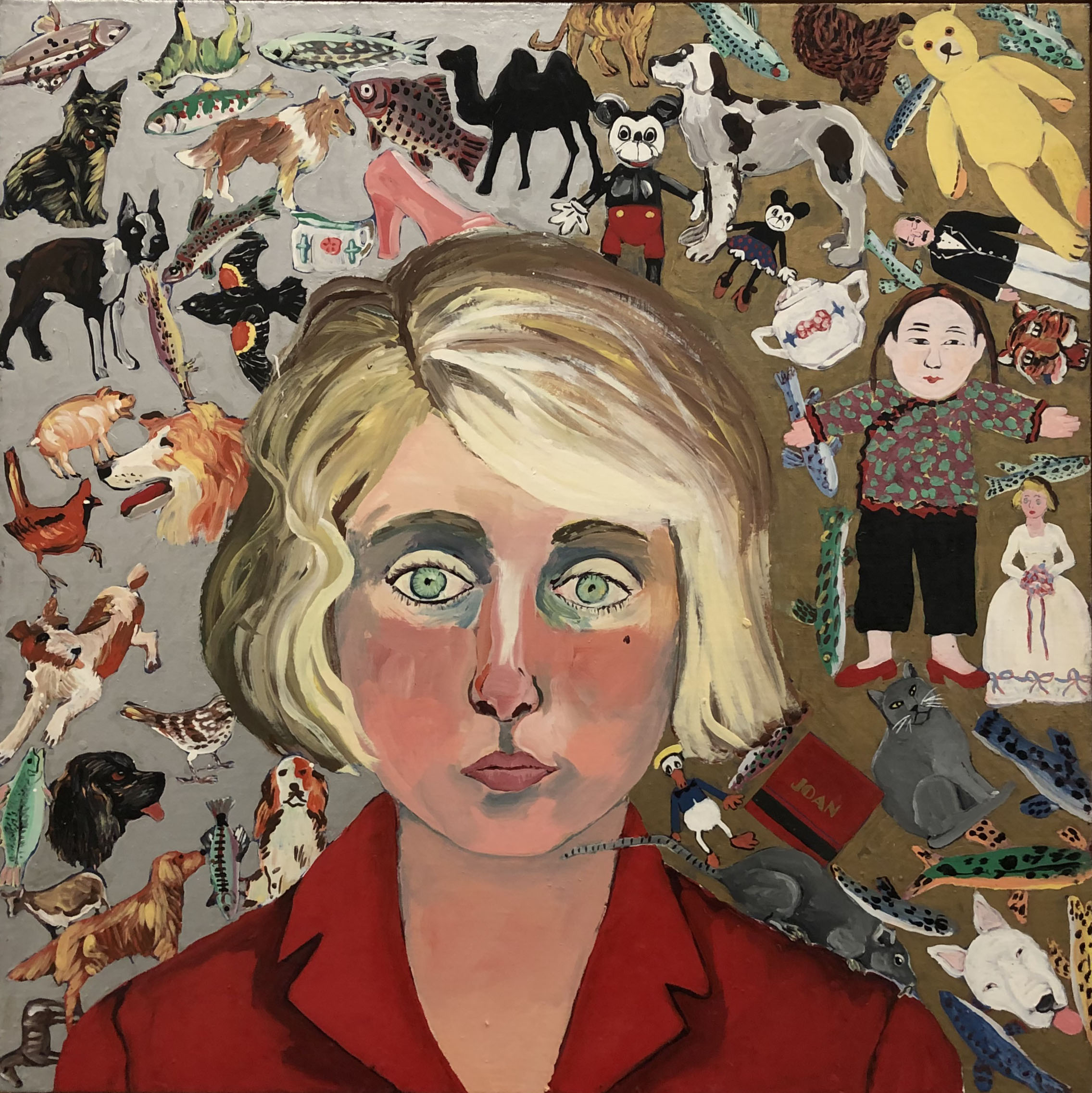 |
Joan Brown, Self-Portrait, 1970. The Buck Collection
|
At age 22, Joan Brown was the toast of New York. Artforum christened her "Everybody's Darling" and put one of her paintings on its cover. The Whitney tapped Brown for its then-annual show of new talent, and the Museum of Modern Art bought one of her paintings, Thanksgiving Turkey. An incipiently feminist still life that code-switches as abstract expressionism, Thanksgiving Turkey related to the Bay Area's history of figuration and thick paint layers. It was contemporary with next-door neighbor Jay DeFeo's The Rose, and it heralded a brilliant career.
 |
| Joan Brown, Thanksgiving Turkey, 1959. Museum of Modern Art |
Thirty-some years after Brown's early death (1990), a SFMOMA-organized survey has landed at the Orange County Museum of Art. Though abbreviated from the San Francisco showing, the selection at OCMA is enough to tell the story of an Alice-in-Wonderland inversion of art world success.
 |
| Joan Brown, Green Bowl, 1964. San Francisco Museum of Modern Art |
 |
| Joan Brown, Woman Wearing Mask, 1972. San Francisco Museum of Modern Art |
Within a few years of her early renown, Brown had changed direction. Her paint thinned as her palette went lighter. She produced paintings like Mask—an illustration of a woman wearing a dime-store mask. Brown said that she "got a wallop" from painting subjects that were "kind of corny." She favored gently humorous or eccentric pictures drawn from her life as mother, lover, wife, and artist. The shift cost Brown much of her early following.
It's tempting to compare (and contrast) Brown to Philip Guston, who also switched from AbEx to goofy figuration in the mid-sixties. Somehow hooded Klansmen were easier to accept as art than the inner reality of women's lives. Brown was producing women's paintings for new Feminist age, yet she got relatively little attention from Feminist critics. Her sensibility was too different, too Mom humor. It was naive, yet Brown was too much an insider to be an outsider. So what were to make of her art?
 |
| Joan Brown, The Dancers in a City #2, 1972. San Francisco Museum of Modern Art |
Two words: "bad painting." Marcia Tucker coined that term and included Brown in her 1978 survey of Bad Painting at New York's New Museum of Contemporary Art. As Tucker had it, Bad Painting is "an ironic title for 'good painting', which is characterized by deformation of the figure, a mixture of art-historical and non-art resources, and fantastic and irreverent content. In its disregard for accurate representation and its rejection of conventional attitudes about art, 'bad' painting is at once funny and moving, and often scandalous in its scorn for the standards of good taste."
 |
| Joan Brown, The Journey #5, 1976. Orange County Museum of Art |
For better or worse, the label didn't stick to Brown—except among critics who continued to find her work just plain bad bad. And within a few years of the Tucker show, Brown's art had taken yet another unexpected turn. She shifted deeply into new-age spiritualism, a move that was, if possible, even less popular with the intelligentsia than the Bad Painting. In 1986 L.A. Times critic Colin Gardner snarked: "The art is so absorbed in its own blinkered ego that it makes the need for a critical response totally irrelevant."
 |
| Joan Brown, The Fan (Homage to Sai Baba), 1980. Collection of Noel Neri, Estate of Joan Brown |
The work that really stuck with me is a spiritual (post-Bad?) painting that I wouldn't have recognized as by Brown. Late in her career (yet only in her 40s) Brown took Indian guru Sai Baba as her mentor. He told her that her mind was like a ceiling fan, spinning even after it was turned off. It was necessary to redirect her restless energy into spiritual development. This resulted in an original and haunting painting that makes you wonder what else Brown might have produced in this vein.
Ducamp left art for chess, and Brown turned from painting to obelisks. In the last decade of her career, Brown devised public artworks, many taking the form of the obelisks she had seen in her travels to Egypt. The exhibition has a single example, in painted wood. Here it memorializes Brown's premature death. She was installing an obelisk in Sai Baba's Eternal Heritage Museum (Puttaparthi, India), when part of the building collapsed, killing her at age 52.
"Joan Brown" runs through June 2, 2024.
 |
| Joan Brown, Cat and Rat Obelisk, 1981. Private collection |








Comments
In the age of social media and blogs-vlogs, some of the gatekeepers of the past (magazines, newspapers, TV shows) are now competing with way more voices. However, the same modern technology and cultural trends also exist in places like today's China, but gatekeepers there admittedly still are able to grab firm control.